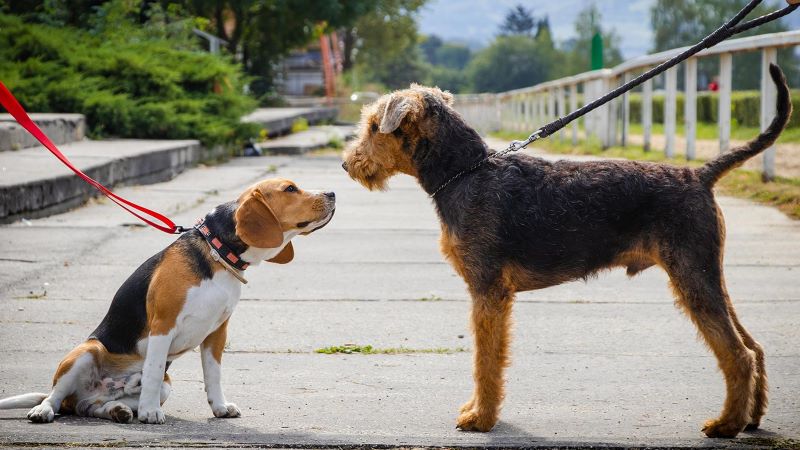Whether you're buying from a responsible breeder or adopting a shelter dog, bringing home a new canine is so exciting! Set your new pup and your existing dog up for harmony by following the below tips.
1. Make the first dog-dog introduction a success.
Ensure that the first dog-dog meeting between the “new” dog and the “older” (existing) dog is in a neutral spot, such as the sidewalk. Non-neutral territory is a place that either dog considers to be his turf, such as his house or yard.
You need two humans – grab a friend - for this introduction. Each human has one leashed dog and some tasty treats. Instead of letting the dogs meet immediately, start walking down the street with the dogs near each other but not close enough to touch and interact. This is called parallel walking. Reward the dogs for calm behavior. During the walk, gradually allow the dogs to get closer together until they are walking side by side. As the dogs get closer, they realize that the other dog is not a threat.
After you move the dogs into the house, you may want to keep them on leash at first.
2. Provide breaks.
Use baby gates or other barriers in the house to give breaks and to separate the dogs when you cannot supervise interactions. Be your older dog’s advocate if the older dog is not properly correcting the new dog by using appropriate body language. Separate the dogs or put the new dog in his crate for a brief time out if the new dog is too rough or will not back down from pestering your older dog.
3. Share your love and time.
Give both dogs special time. Include your older dog in the fun things that you do with the new dog.
Often we spend time training the new dog, but the older dog feels left out and would love to train too! Consider enrolling both dogs in separate training classes. Do daily training sessions at home with each dog individually; you may need to put the non-working dog in a different room. Teach an older dog new tricks or review tricks the older dog already knows. The dogs can even work in a training session for their dinner kibble – piece by piece!
4. Bring both dogs on walks.
If the older dog cannot keep up with the new dog’s pace or distance, take the dogs on separate walks and/or give the older dog shorter walks. When you leave one dog home without the other dog, consider giving the “at home” dog something fun to do (find kibble in a puzzle or eat out of a kong toy). Supervise your dog with any toy to ensure he plays safely before you leave him alone with the toy.
5. Create a positive association.
Have the dogs do positive things together, such as eating, exercising or receiving affection. For eating, feed the dogs handfuls of kibble when the dogs are next to each other. Give one handful to the new dog, one handful to the older dog, etc.
Exercise – swim, hike, play or walk - the dogs together!
Ensure the older dog gets oodles of attention when the new dog is around. The older dog should think, “Lots of great stuff happens to me when this new dog is around!”
6. Take advantage of offered behaviors.
Reward the dogs for any behaviors that you like, such as watching you in the house in a down position, calmly hanging out in the kitchen, nicely wrestling or sharing toys with each other. Behaviors that are rewarded are likely to be repeated!
Don't forget to enroll your new dog!
Enroll both of your pups in pet insurance to be sure you can afford the highest quality veterinary care for all your four-legged family members. Pet insurance can help protect against accidents and illnesses, with the option to add on coverage for wellness care items and much more! Get a quote today.

